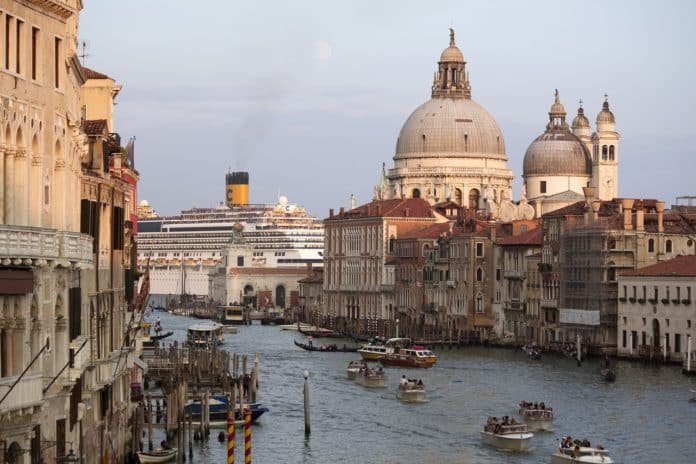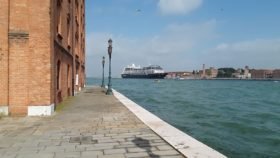PARIS, JUNE 21 – Due to the large commercial vessels and cruise ships, “le Grandi Navi,” the Venetian Lagoon risks once again to be classified as a World Heritage site in danger.
UNESCO specialists have sent a new warning to Italy asking “urgently” for a “long-term solution” that gives maximum priority to preventing access to ports in Venice, preferably by “redirecting them [the ships] to more suitable ports in the area.”
The Venetian dossier will be examined in the annual session from the 16th to 31st of July. If approved by the World Heritage Committee, this proposal will ask Italy to develop an intervention plan, corrective measures, and consequently submit an implementation report by February 2022. Venice is not the only UNESCO site that risks returning to the lists of “endangered” world heritage assets; the same fate could befall Stonehenge unless the plans for the construction of a tunnel underneath the ruins are modified. In addition, the Australian government has been issued another warning for the protection of the Great Barrier Reef which extends 2300 kilometers off the continent.
“UNESCO’s opinion had been in the air for some time. The announcement of a possible decision by mid-July for the inclusion of Venice in the list of world heritage sites in danger would be a serious matter for our country. There is no more time to hesitate,” commented Italian Minister of Culture Dario Franceschini. He noted that an important step has already been taken in a recent government executive order which suggested a definitive docking location for the Large Ships outside the Lagoon: “Now I think more needs to be done as to immediately prevent the passage of large ships in the Giudecca canal.”
Venice and its lagoon have been inscribed on the UNESCO World Heritage list since 1987. Of more than 1,100 UNESCO World Heritage sites, about fifty are currently defined as endangered. Consequently to this registration begins a negotiation with the State Party, in this case that of Italy, with aims to “verify the removal of the conditions of danger to the sustainability of the site and to the maintenance of the cultural values that led to its inclusion in the World Heritage List.”
Today’s warning follows a multi-year dialogue between UNESCO and related international technical bodies such as ICOMOS and Italian authorities. The last mission of joint UNESCO / ICOMOS / RAMSAR monitoring took place in January 2020. (@BrittanyBryantF)


